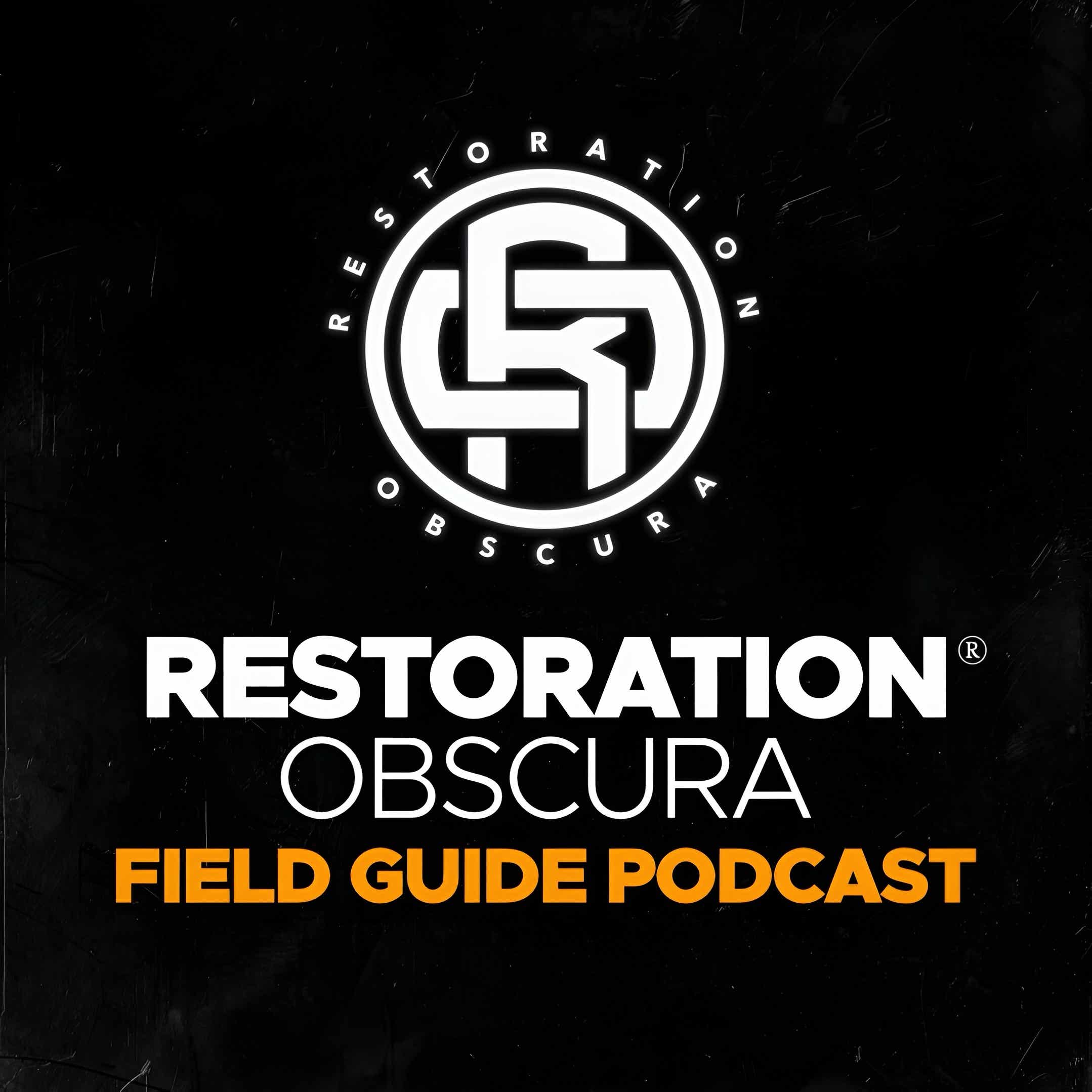Restoration Obscura Field Guide Podcast

Restoration Obscura Field Guide Podcast
Podcast Description
The Restoration Obscura Field Guide is a podcast where photography and history converge to uncover the stories time tried to erase. Through restored images, archival research, and immersive storytelling, we explore the hidden corners of the past—from the backroads of Upstate New York to forgotten places across the nation and around the world.
Each episode uses photography and historical restoration as a lens to preserve memory, rediscover lost narratives, and bring overlooked history back into focus. These are the stories that deserve to be remembered—told with care, curiosity, and an eye for the forgotten.
www.restorationobscura.com restorationobscura.substack.com
Podcast Insights
Content Themes
Episodes focus on themes like forgotten history, urban exploration, and restored photography, with specific topics such as the Hudson Valley UFO sightings in the 1980s and techniques for interpreting urban landscapes. The podcast emphasizes unearthing lost narratives and offers insights into how history is embedded in everyday environments.

The Restoration Obscura Field Guide is a podcast where photography and history converge to uncover the stories time tried to erase. Through restored images, archival research, and immersive storytelling, it explores the hidden corners of the past, from the backroads of Upstate New York to forgotten places across the nation and around the world. Each episode uses photography and historical restoration as a lens to preserve the past, rediscover lost narratives, and bring overlooked history back into focus. These are the stories that deserve to be remembered, told with care, curiosity, and an eye for the forgotten.
The Restoration Obscura Field Guide Podcast: When The Grid Failed: The Blackouts of 1965, 1977, and 2003
Major blackouts have repeatedly reshaped the Northeast and shown how people respond when the systems that sustain daily life fail without warning. Through the events of 1965, 1977, and 2003, the episode follows the links between technology, civic trust, and the ways communities adapt when the lights vanish. These nights reveal the conditions that defined their eras, from postwar confidence to urban crisis to the vigilance of the early twenty first century. Taken together, they form a record of how darkness can expose what ordinary life keeps out of view.
Act I – 1965: The Night the Stars Came Back
This act explores the causes and cultural meaning of the Northeast Blackout of 1965, when a relay failure in Ontario triggered a cascading collapse across hundreds of thousands of square miles. The response that followed reflected a nation still rooted in cooperation and postwar belief in institutional stability, creating a moment remembered for calm streets and a sky that returned in full for the first time in decades.
Act II – 1977: The Bronx Is Burning
This act focuses on the July 1977 blackout in New York City, a night shaped by heat, fear, and a city already under strain from unemployment, arson, economic collapse, and unresolved tension. The failure of the grid acted as a release valve for years of pressure, revealing how fragile the civic fabric had become and how quickly fear could shift into widespread unrest.
Act III – 2003: The Fragile Grid
The Field Guide explores the largest blackout in North American history and the ways it reflected a world transformed by the events of 2001. This act follows the regional cascade that began in Ohio, the public uncertainty that followed, and the recognition that modern infrastructure can fail from smaller causes than many expect. The act closes with a broader consideration of vulnerability, resilience, and the lessons written across all three nights.
About the Series
The Restoration Obscura Field Guide Podcast is an ongoing documentary exploration of hidden history, cultural memory, and geography. Each episode investigates the stories that shape our understanding of the past and the traces that remain in the present.
Learn More
Read more at restorationobscura.com or subscribe to the Restoration Obscura Substack for essays, restorations, and new field investigations. Field Guide to the Night is available worldwide in print and Kindle editions.
Credits
Written, Narrated, and Produced by: John Bulmer
Sound Design and Mastering: Restoration Obscura Audio
Copyright© 2025 Restoration Obscura Press. All rights reserved.Unauthorized reproduction, distribution, or broadcast of this episode or any portion thereof is prohibited without express written permission. Restoration Obscura and The Restoration Obscura Field Guide are trademarks of Restoration Obscura Press.
Get full access to Restoration Obscura at restorationobscura.substack.com/subscribe

Disclaimer
This podcast’s information is provided for general reference and was obtained from publicly accessible sources. The Podcast Collaborative neither produces nor verifies the content, accuracy, or suitability of this podcast. Views and opinions belong solely to the podcast creators and guests.
For a complete disclaimer, please see our Full Disclaimer on the archive page. The Podcast Collaborative bears no responsibility for the podcast’s themes, language, or overall content. Listener discretion is advised. Read our Terms of Use and Privacy Policy for more details.